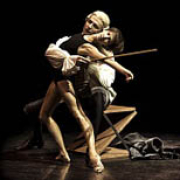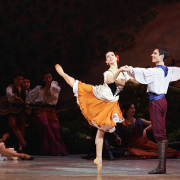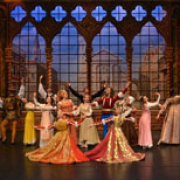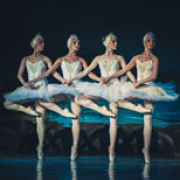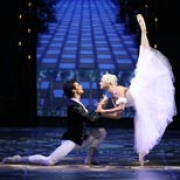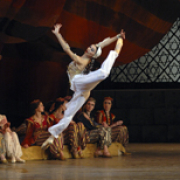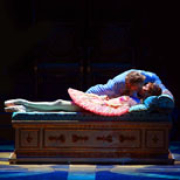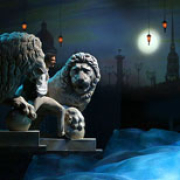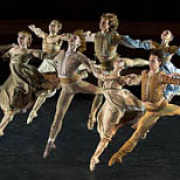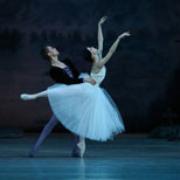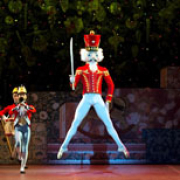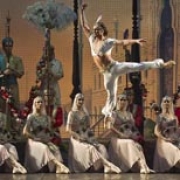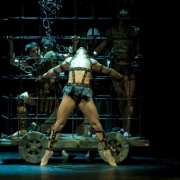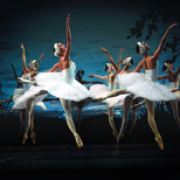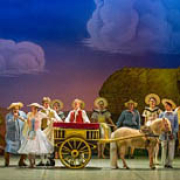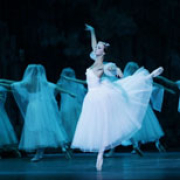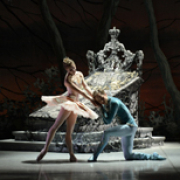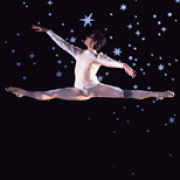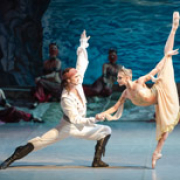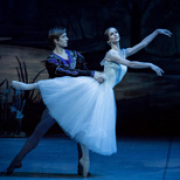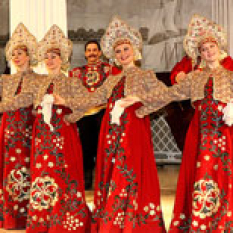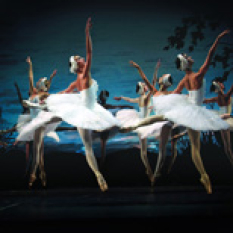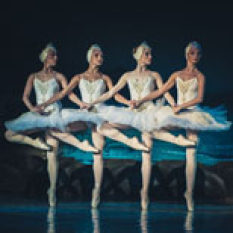A Thousand and One Nights (Mariinsky II (New) Theatre, ballet)




Credits
Music by Fikret Amirov
Libretto by Nailya Nazirova, Maksud and Rustam Ibragimbekov
Choreography by Eldar Aliev
Set and Costume Designer: Pyotr Okunev
Lighting Designer: Sergei Martynov
Video Designer: Vadim Dulenko
Principal Coach: Alexander Kurkov
Coaches: Alexandra Arkhangelskaya, Sergei Zolotarev
Description
The Orient or the Oriental tale has been a hobbyhorse for ballet theaters over the entire history of their existence. Oriental ballets are truly fairy because of special plastique, unordinary rhythms, exotically ornate melodies, gorgeous scenery, and costumes worthy to be called objets de vertu.
The ballet A Thousand and One Nights was premiered at the Azerbaijan Opera and Ballet Theatre in Baku in 1979. The music was written by Fikret Amirov (1922-1984) who had become a national pride by that time. His creative experience embraced original orchestral pieces – such conductors as Bernstein and Stokowski would include them in their concert programs – as well as operas and ballets on topics of Azerbaijani history. “I want Azerbaijanian music to be played throughout the world,” he said and boldly wove Oriental melodies into European classical forms, imitating a folk orchestra’s sounding he remembered from his childhood.
Any other Oriental culture was another source of inspiration for Fikret Amirov. Before composing the ballet he made tours of Iraq, Iran, Turkey, Egypt, Syria, Morocco and India. During each tour he endeavored to carefully study local traditions. “I aimed to penetrate deeply into the Arab culture of music, Arab sense of rhythm, beauty of Arab musical rites. I studied historic and architectural landmarks. I was faced with the task of making a synthesis of the national and the panhuman.”
A Thousand and One Nights became a quintessence of his creative explorations and achievements. “The ballet was conceived as a hymn to the woman, her wisdom and spiritual beauty and inspired by the national character, sapience and humanistic sounding of the outstanding medieval monument of Arab literature,” the composer wrote.
The libretto was created by Nailya Nazirova, a choreographer who from time to time staged ballets to Amirov’s music, and the renowned Ibragimbekov brothers: Rustam, a future coauthor of Nikita Mikhalkov’s award-winning movies, and Magsud, a writer, scenarist and film director.
They incarnated their conception in two acts of the ballet. With the truly Oriental wisdom, they made a selection from the book to choose the first and primary tale The Story of the Ruler Shahryar and his Brother. Its narration alternates with the three most popular tales told by Scheherazade: Sinbad the Sailor and the Roc, Aladdin’s Wonderful Lamp and Ali Baba and the Forty Thieves. All the stories demonstrate such female chief traits as love, beauty and wisdom.
In accordance with the plot, the music backcasts the coloring of the Middle East. The ballet Orient is real, not nominal. The composer includes a tar (‘traditionally crafted long-necked lute’) in the score and uses an endless repertoire of percussion instruments – bongos, tom-toms, a xylophone, a vibraphone, drums, bells, timpani, cymbals, etc. – to express the rich Arab rhythmic. Their role in the score is so all-sufficient that some scenes run accompanied by percussion only, whether solo or ensemble.
The use of a female voice on the choral background gives a special tint to the tone color. Their sounding emerges in the key moments to create a fermented mood in the beginning of the ballet or to express the grief of women doomed to death or to sing the victory of good and the woman’s force in the love duet of Shahryar and Scheherazade.
Fikret Amirov dedicated A Thousand and One Nights to his well-beloved wife. “To Aida, my helpmate” is written down on the cover page of the score.
The first night in 1979 was a triumph. The ballet truly expressed the poetry of the ancient tales in sounds, movements and pictures and dazed the audience by its originality and variety of colors.
First in Russia’s Far East the ballet-goers have an opportunity to watch A Thousand and One Nights choreographed by Eldar Aliev. Born in Baku, he staged the ballet in America and Europe over the years. The new version has been created by Eldar Aliev for the Primorsky Stage.
Natalia Rogudeeva
Synopsis
Act I
A powerful sultan and skillful hunter, Shakhriar is deeply in love with his wife, Nurida. The arrival of a party of the Sultan’s men signals a hunting expedition. Torn between his love for his wife and his affection for hunting, Shakhriar departs after Nurida persuades him to go.
Left alone, Nurida summons her slaves, and when Shakhriar unexpectedly returns, he finds his unfaithful wife in the arms of her favourite slave. Angered and humiliated, the outraged Sultan kills his wife, and condemns all of the other young women in the kingdom to death.
In the midst of the bloodshed, a beautiful young woman named Scheherazade suddenly appears. As death hovers above her head, Shakhriar, overwhelmed by her beauty, intervenes and temporarily delays the execution.
Act II
Scheherazade convinces Shakhriar to listen to her stories and to delay the executions as long as he is entertained. Shakhriar agrees to the condition, and Scheherazade proceeds to tell stories that illustrate the wisdom, beauty, and loving characteristics of women.
You may also like
Genre: Ballet
Genre: Ballet
Genre: Ballet
Genre: Ballet
Genre: Ballet
Genre: Ballet
Genre: Ballet










